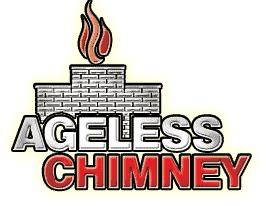Chimney Services in East Village, NY
What our clients say




Read About Us
Browse Fireplace Services
contact us
The Cost of Chimney Services: What to Expect in East Village, NY

Overview of Chimney Services Costs
Understanding the costs associated with chimney services in East Village, NY is crucial for budgeting and planning. Homeowners in New York City often need a variety of services, from chimney liner installation to chimney cap installation.
In East Village, NY, these services can vary in price depending on the complexity and materials required. Ageless Chimney provides comprehensive estimates to ensure transparency.
Experienced Professionals
Our team at Ageless Chimney is highly trained and experienced in all types of chimney services, ensuring top-quality work.
Transparent Pricing
We offer clear and detailed estimates for all our services, so you know exactly what to expect.
Local Expertise
Serving East Village, NY, and the surrounding New York City, we understand the specific needs and challenges faced by homeowners in our community.

Detailed Pricing for Common Chimney Services
Chimney Liner Installation: Installing a chimney liner is essential for safety and efficiency. The cost for this service can range significantly based on the liner type and chimney size. Metal liners, for example, are often more expensive than clay tile liners but offer greater durability. Installation complexity, such as accessibility and chimney height, can also affect the final price. Ageless Chimney ensures the installation is done right, providing long-term benefits and peace of mind.
Chimney Cap Installation: A chimney cap protects your chimney from debris, rain, and animals. Installation costs are typically reasonable but can vary with cap quality and chimney height. Basic caps are less expensive, while custom or high-quality materials may cost more. It’s an investment that prevents costly repairs down the line by keeping your chimney in good condition. Ageless Chimney offers a variety of options to suit your budget and needs.
Chimney Masonry Repair: Over time, chimney masonry can deteriorate due to weather and use. Repair costs depend on the extent of the damage and the materials used. Minor repairs might be affordable, while extensive restoration can be more expensive. Masonry repairs are crucial to maintaining the structural integrity and safety of your chimney. Ageless Chimney ensures quality repairs with durable results, using the best materials available.

Factors Influencing Chimney Service Costs
Several factors influence the cost of chimney services in East Village, NY. The condition of your chimney is a primary factor. A well-maintained chimney typically requires fewer repairs and lower maintenance costs. On the other hand, neglected chimneys may need more extensive and costly services. Regular inspections and maintenance can help manage these costs by catching issues early.
The type of service needed also plays a significant role in determining the cost. For instance, chimney cleaning services might be less costly than extensive masonry repairs. Routine cleaning helps prevent the buildup of creosote, a flammable substance that can cause chimney fires. More complex services like liner or cap installations, or masonry repairs, tend to be pricier due to the labor and materials involved.
Materials required for the job can further impact the overall cost. Higher quality materials, while more expensive, often provide better durability and longevity. Choosing Ageless Chimney means you’ll receive a detailed assessment and a fair quote. Our professional chimney services cover all aspects of chimney maintenance and repair, ensuring your chimney functions efficiently and safely. We prioritize transparency and customer satisfaction, making sure you understand each cost component in New York City. Call us today at 516-795-1313 to get started!
